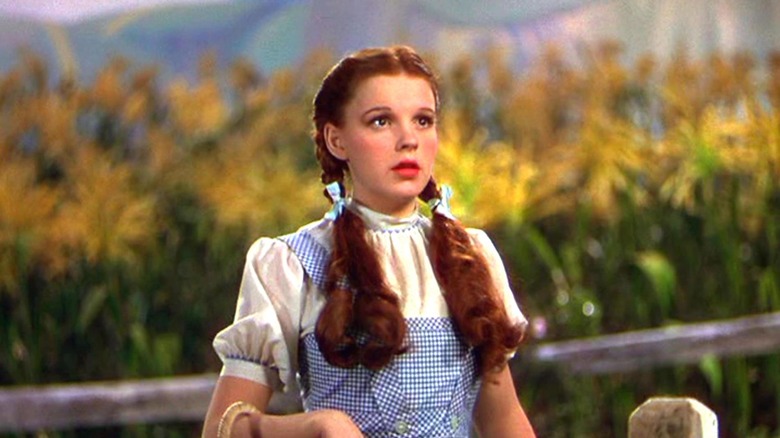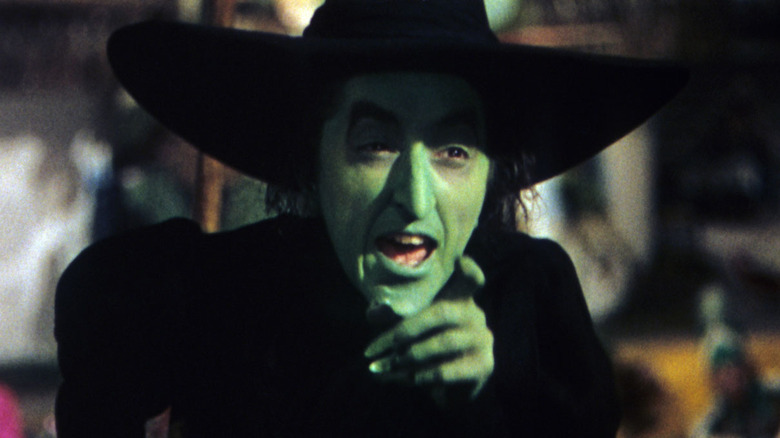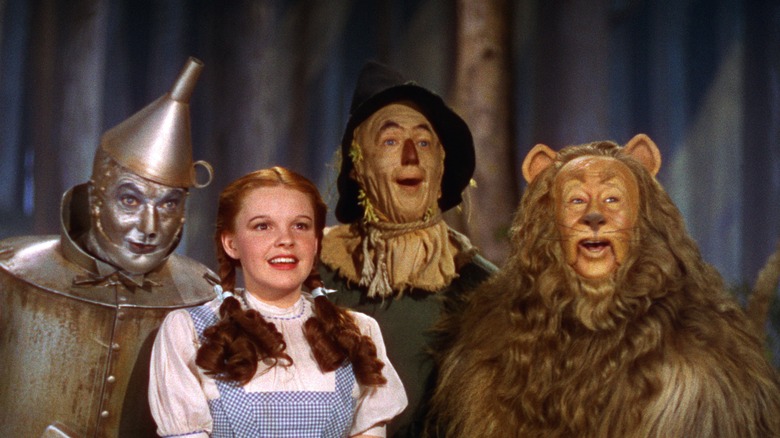The Wizard Of Oz Left An $80,000 Scene On The Cutting Room Floor
Despite being nearly eight decades old, it seems "The Wizard of Oz" still has a trick or two up its sleeve. The iconic 1939 Judy Garland musical has entertained audiences for years with its memorable characters, unique contrast of black and white and technicolor, and catchy musical numbers. It remains in the top 10 of the American Film Institute's top films of all time and according to the Library of Congress, "The Wizard of Oz" is the most-watched movie of all time.
Despite the movie's immense popularity, the film still has the ability to surprise its fans. The film harbors a secret that even today is still only known by a few. Given the age of the film, it is now a secret perhaps with no conclusive answer. Instead, we're left to follow our own Yellow Brick Road to ascertain just why an expensive, intricate scene was withheld from the final cut of "The Wizard of Oz."
The Wicked Witch still holds a secret
According to The Independent, "The Wizard of Oz" contained a musical number called "The Jitterbug." But it wasn't just any musical number. The scene took five weeks to shoot and cost Metro-Goldwyn-Mayer $80,000 to produce. The decision to leave an investment of that size on the cutting room floor couldn't have been easy for MGM, as "The Wizard of Oz" was the most expensive film the studio had produced at that time. So why did they do it?
After viewing the rough cut of the film, producer Mervyn LeRoy thought the film was too long and asked for the film to be pared down by 20 minutes. Earlier script versions show a subplot that was eventually dropped, likely as part of this edit. "The Jitterbug" scene was tied to this subplot, and no longer made sense to the narrative. Despite the musical number getting cut, it is still referenced in the film.
As Playbill points out, in the final cut The Wicked Witch foreshadows the number by referencing it while ordering her flying monkeys in what would have been the previous scene. In the final cut of the movie, The Wicked Witch says:
"Take your army to the haunted forest and bring me that girl and her dog. Do what you want with the others but I want her alive and unharmed. They'll give you no trouble, I promise you that. I've sent a little insect on ahead to take the fight out of them."
The little insect that The Wicked Witch is referring to was going to be a mosquito-like bug that would cause people to perform the jitterbug dance, leaving them exhausted. Most audiences never seemed to pick up on the reference, perhaps entranced instead by Margaret Hamilton's performance as The Wicked Witch as she bemoans about her tiny archrival.
However, if we continue down the Yellow Brick Road, we might discover less obvious reasons for "The Jitterbug" being removed from the movie.
A timeless film or something else?
There are additional theories as to why the scene was cut. A simple one that makes perfect sense is that MGM wanted a timeless film, and the inclusion of a popular dance would date "The Wizard of Oz." The jitterbug was a style of swing dance popularized in the 1930s, associated with the big band musical era. According to The Kansas City Star, producers of the film wanted a "timeless, magical place" and the jazz number that sets it in a specific decade didn't fit the overall tone of the movie.
More sinister theories as to why the number was dropped include producers being concerned with the term "jitterbug" being slang for alcoholic tremors or the dance's connection to mixed-race Harlem after being featured in Cab Calloway's 1935 short film "Jitterbug Party." While we may never know specifically why the scene was cut or what "The Wizard of Oz" might have looked like had it remained, we are left with a glimpse of sorts. Though no studio footage exists, audio of the scene remains as well as on-set footage taken by "The Wizard of Oz" composer Harold Arlen. To some degree, the recordings allow us to pull back the curtain and imagine the scene in its entirety.


